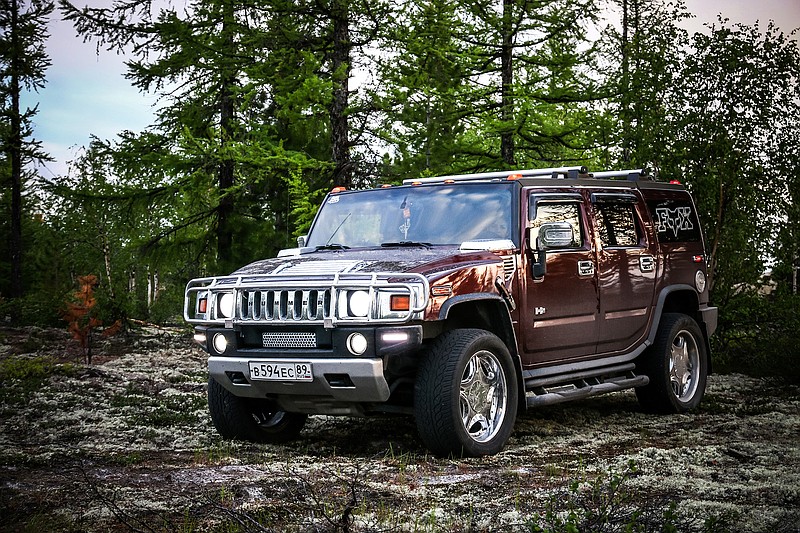Please, General Motors, don't revive Hummer.
The brand is toxic, and the idea that adding a brand can cure what ails your existing business - which, in case you've forgotten, is selling Cadillacs, Chevrolets, Buicks and GMCs - makes no more sense today that it did when the automaker tried it with Hummer, Saturn and Saab.
During its lost decades of the 1980s and '90s, GM wasted billions of dollars and the talent of countless engineers and designers chasing the fantasy of those three brands. They're gone, and GM is better off without them, able to concentrate on providing strong lineups for fewer brands.
Talk about reviving Hummer as an all-electric brand of luxury off-roaders began in mid-2019. It shouldn't survive into 2020.
It's a mirage, like the illusion an idealized new relationship will improve the broken ones you already have.
With friends like this, who needs enemies?
Not to put too fine a point on it, but a lot of people hate Hummer. Particularly the educated, wealthy, early adopters GM would want to attract with a line of electric luxury SUVs.
From the day the first GM-developed H2 SUV rolled off the assembly line, the brand was a raised middle finger to convention: So heavy the EPA didn't even calculate its fuel economy, styled with fake military chic like an overdone uniform from a costume shop.
There's nothing inherently wrong with that. "Rebel Without a Cause" can be a fine business model, but you've got to deliver the goods.
Hummer didn't. The H2 and the smaller H3 that followed it were poseurs. They pretended to be luxury vehicles but were festooned with cheap plastic. Based on GM's GMT800 truck architecture, they had more off-road capability than an average pickup, but nothing close to the military HMMWV (known as the Humvee) that created the brand's image.
Jeeps and Land Rover's vehicles are authentic, true to their heritage. Hummers weren't.
"The product was a phony," product development consultant Eric Noble of the Carlab in Orange, California, said. "It wasn't just that it was a profligate fuel user. It was a profligate fuel user for no good reason. Ferraris are thirstier, but they suffered exactly zero sales decline in the Great Recession."
The one-two punch of spiking fuel prices and the Great Recession wounded Hummer, but the fatal blow was that they'd become vehicles too many Americans just didn't want to be seen in.
Baggage included
Adding a brand makes sense when a company wants a clean slate to create an image that will draw a new type of customer. Toyota's invention of the Lexus luxury brand is Exhibit A. The baggage Hummer carries with it is the opposite of that. It's a reclamation project GM doesn't need.
"Hummer had a short life as a coveted, niche brand," IHS Markit senior analyst Stephanie Brinley said. "But it was not recognized for environmental friendliness or as a beacon of technology, so the brand image it revives would have to be reshaped and redefined."
About now, your local Cadillac dealer should be jumping up and down, saying, "I'm right here!"
GM says Cadillac will lead its big move into electric vehicles, but the process is taking too long. Adding Hummer would diminish the impact electric vehicles have on Cadillac, weakening a brand that deserves the automaker's undivided attention.
If GM truly needs a second brand to sell luxury electric vehicles, it's got a ready-made sales channel in GMC. The all-truck brand has a sterling image and already commands premium prices. If GM can't profitably sell enough EV SUVs between Caddy and GMC, the problem isn't the brands.
Current electric-vehicle technology doesn't lend itself to off-roading, another factor against a Hummer revival. Batteries are heavy. Weight, which can bog a vehicle down in sand or mud, is the enemy of off-road capability. Serious off-roaders who tackle challenges like the Rubicon Trail and Baja 1,000 are the last people likely to sign up for an EV.
"If you resurrect Hummer, it should be with peerless off-road ability," Noble said. "Batteries make that tougher. An H2-sized vehicle with a 300-mile range would need 1,500 pounds of batteries. That weight comes at the expense of performance and payload."
Repeating mistakes
Adding brands is in GM's DNA, but high blood pressure can be genetic, too. The last time adding a brand improved GM's U.S. business was arguably 1918, when Chevrolet joined the fold.
Somehow, a generation ago, GM's leaders decided that creating a new brand was a better business model than fixing the ones they already had. Saturn was born largely because GM couldn't convince Chevy dealers to change how they sold cars, and its factories and workers to change how to build them.
Saturn made some fine vehicles, but GM would've benefited more by fixing its existing brands, not spending years and billions creating a new one the others resented as internal competition for sales and resources.
In the crassest terms, some executives made careers of kicking problems down the road, promising to fix them with a new brand tomorrow rather than doing anything today.
As 2020 dawns, Cadillac should be GM's focus. Establishing it as a leader in electric vehicles and a meaningful force in the global luxury market is a huge challenge. Anything that distracts from that threatens the automaker.
Please, GM, don't revive Hummer.

